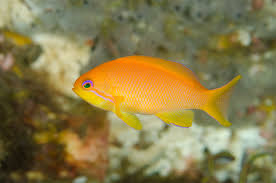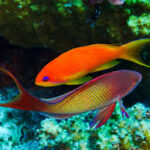Dragon-Inspired Music Performances: A Fusion of Myth and Melody

Dragons, as majestic and mythical creatures, have held a deep-rooted place in various cultures worldwide. In Chinese folklore, dragons symbolize strength, power, and prosperity, while in Western traditions, they often represent formidable forces of nature or challenges to be overcome. These multifaceted mythical beings have inspired artists across the ages, and their presence can be found not only in visual arts but also in music. From classical compositions to modern experimental performances, dragon-inspired music has been a fascinating exploration of culture, myth, and sound.
In this article, we will explore how the dragon has influenced the world of music performance, taking a look at dragon-themed compositions, concerts, and performances throughout history and the creative interpretations of this mythical creature through melody and rhythm. From operatic works to orchestral pieces, dragon-inspired music transports audiences into a world where music becomes the medium through which the awe and mystique of dragons are expressed.
The Dragon as a Symbol in Music: Historical and Cultural Context
Before diving into specific performances, it is essential to understand the cultural and symbolic significance of the dragon in both Eastern and Western traditions. Dragons, as creatures of myth, have long been a source of inspiration for storytellers, artists, and musicians alike. The dragon symbolizes various meanings depending on the culture, including strength, transformation, mystery, and the supernatural.
In Chinese culture, the dragon is seen as a benevolent creature, associated with imperial power and the celestial realm. As a symbol of auspiciousness, the dragon is central to traditional Chinese opera, festivals, and music. Its association with the Emperor and the heavenly realm has inspired many Chinese composers to incorporate dragon motifs into their works, often conveying themes of power, protection, and transcendence.
In contrast, the Western view of the dragon often portrays it as a fierce and intimidating creature. In medieval and Renaissance art and literature, dragons were symbols of chaos, greed, and destruction, often vanquished by knights or heroes. This Western mythological approach has also inspired a variety of musical performances, where the dragon’s roar or its defeat is conveyed through powerful, dramatic compositions.
The dragon, regardless of its cultural background, has served as a conduit for expressing fundamental human themes through music—victory and defeat, chaos and harmony, strength and vulnerability. Musicians across centuries have embraced the mysticism and grandeur of this mythical creature, resulting in performances that blend creativity, symbolism, and a unique sense of cultural identity.
Dragon-Inspired Music Compositions: A Cultural Exploration
1. Classical Music and Dragon Symbolism
Classical music offers a rich history of compositions inspired by dragons, particularly in operatic works, orchestral pieces, and ballet. Several composers from both the East and the West have drawn upon the image of the dragon to enhance their musical storytelling. These compositions often utilize dragons as characters or represent the mythological creatures symbolically through orchestration and musical themes.
a) “The Firebird” by Igor Stravinsky
One notable example of a dragon-inspired classical work is Igor Stravinsky’s The Firebird, which, while not directly about dragons, is infused with elements of Russian folklore that include dragon-like creatures. The Firebird, a mystical creature in the form of a bird, is often regarded as a parallel to the dragon in many cultures, symbolizing power, transformation, and magical abilities. Stravinsky’s use of lush orchestration and rhythmic intensity evokes the mystical presence of such creatures. Through bold brass sections and evocative strings, The Firebird brings to life a world of mythical beings, making it a perfect musical representation of dragon-like beings in ballet and orchestral performances.
b) “The Dragon” by Jean-Michel Damase
In the classical tradition, Jean-Michel Damase composed an orchestral piece titled The Dragon, which embodies the mythological and mystical qualities associated with dragons. Through the use of dissonant chords and dynamic contrasts, Damase creates a vivid sonic portrait of a dragon, conveying both its power and mystery. The piece opens with a dark and ominous melody, evoking the dragon’s formidable presence, before shifting to more lyrical passages that symbolize the creature’s hidden wisdom and grace.
2. Chinese Music and Dragon Mythology
In China, dragons are celebrated in both music and dance, particularly during festive occasions such as the Chinese New Year. The dragon is often depicted in parades, accompanied by music that incorporates traditional Chinese instruments. These performances evoke the image of the dragon’s majestic flight and its connection to nature and imperial power.
a) Dragon Dance and Traditional Chinese Music
A quintessential example of dragon-inspired music can be seen in the famous Dragon Dance, performed during Chinese festivals. This vibrant and energetic performance often accompanies dragon-themed music played on traditional Chinese instruments like the guzheng (a Chinese zither), erhu (a two-stringed bowed instrument), gong, and drums. The fast-paced rhythms, coupled with the powerful drumming, mimic the movement of the dragon as it slithers and twists through the streets. The traditional melodies blend with the percussion to create an atmosphere of celebration and awe, evoking the mythological significance of the dragon in Chinese culture.
The guqin, an ancient seven-stringed Chinese instrument, is often used in more meditative and spiritual compositions that focus on the inner peace and wisdom the dragon represents. This slower, more reflective music is used in performances that honor the dragon as a symbol of celestial protection and good fortune.
b) Traditional Chinese Opera and the Dragon
Chinese opera, particularly Peking Opera, often incorporates the dragon as a central figure. In operas where the emperor or other high-ranking figures are depicted, the dragon is often used as a symbol of power, divinity, and celestial authority. The accompanying music, which features traditional Chinese instruments such as the pipa (a four-stringed lute) and suona (a Chinese horn), often underscores the grandeur and majesty of the dragon. In Peking Opera, the music can shift from slow and meditative to fast and intense, mirroring the dragon’s power and agility.
3. Modern Music and Dragons: A Fusion of Fantasy and Technology
In contemporary times, dragon-inspired music has evolved significantly, with artists from a variety of genres incorporating the imagery and symbolism of dragons into their works. From symphonic rock bands to film composers, the dragon continues to be a fascinating subject for musical exploration.
a) “The Dragonborn Comes” from The Elder Scrolls V: Skyrim
One of the most popular modern representations of dragon-inspired music can be found in the video game The Elder Scrolls V: Skyrim. The song “Dragonborn Comes,” composed by Jeremy Soule, incorporates powerful vocals and a dynamic orchestral score to evoke the essence of dragons in this fantastical world. The song has become an anthem for fans of the game, symbolizing the player’s role as the Dragonborn, a hero tasked with defeating ancient dragons. Through a mixture of choral chants and sweeping melodies, the piece brings the dragon to life in a modern, digital context, blending folklore with contemporary sound design.
b) “Through the Fire and Flames” by DragonForce
In the world of heavy metal music, British band DragonForce has made their name with the song Through the Fire and Flames, which has become an iconic anthem in the genre. Although not directly referencing traditional dragon mythology, the song’s title, intense energy, and lyrics evoke the imagery of a fierce and unstoppable force, much like the legendary dragons. The fast-paced, virtuosic guitar solos, combined with symphonic elements, create a sense of urgency and power that resonates with the mythical qualities of the dragon. The dragon imagery in this piece is represented through speed, strength, and an undying drive, similar to the qualities of the mythical creature.
c) “Dragon” by Imagine Dragons
The American rock band Imagine Dragons has also embraced the symbolism of dragons in their music. Their song “Dragon” from the album Evolve incorporates references to the mythical creature as a metaphor for inner strength and overcoming challenges. Through a fusion of rock and electronic elements, the song’s driving rhythm and soaring melodies evoke a sense of battle and triumph, aligning with the qualities that dragons represent in both Eastern and Western mythologies.
4. The Role of Music in Dragon-Inspired Performances
Dragon-themed concerts and performances often involve a fusion of music, dance, and theatrical elements, creating a fully immersive experience for the audience. These performances often showcase dragon-inspired compositions alongside choreography and visuals, enhancing the symbolic presence of the creature on stage.
a) “Dragon Night” by the Shanghai Symphony Orchestra
One notable example of a dragon-inspired concert is Dragon Night, a performance by the Shanghai Symphony Orchestra. This concert blends traditional Chinese music with Western orchestral elements, creating a cross-cultural exploration of dragon symbolism. Through powerful orchestral music and stunning visual projections, Dragon Night immerses the audience in a world where the dragon’s presence is felt through both sound and sight.
b) The Dragon King: A Collaborative Performance
The Dragon King is a collaborative performance that merges Chinese classical music with contemporary dance and multimedia elements. The performance tells the story of the Dragon King, a mythical figure who rules the seas and storms. Through a mix of traditional instruments, electronic soundscapes, and dynamic choreography, the performance brings to life the power and majesty of the dragon in both music and movement.
Conclusion: The Enduring Power of Dragon-Inspired Music
The influence of the dragon in music transcends cultural boundaries and historical periods, from ancient Chinese opera to modern video game soundtracks. Whether represented through classical orchestration, rock anthems, or traditional Chinese melodies, the dragon continues to captivate and inspire musicians and audiences alike.
The symbolism of the dragon—its power, mystery, and transformative energy—provides a vast canvas for musical exploration. Through various musical genres, dragon-inspired performances have become an important means of expressing cultural identity, narrating mythological tales, and evoking powerful emotions. As
a source of endless inspiration, the dragon will undoubtedly continue to soar through the musical world, leaving an indelible mark on the art of performance for generations to come.


